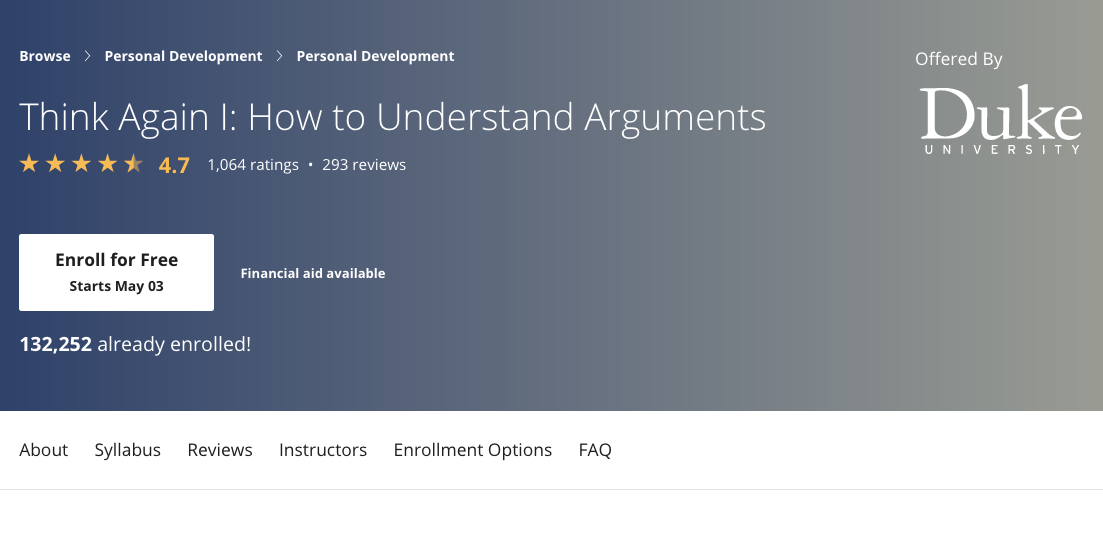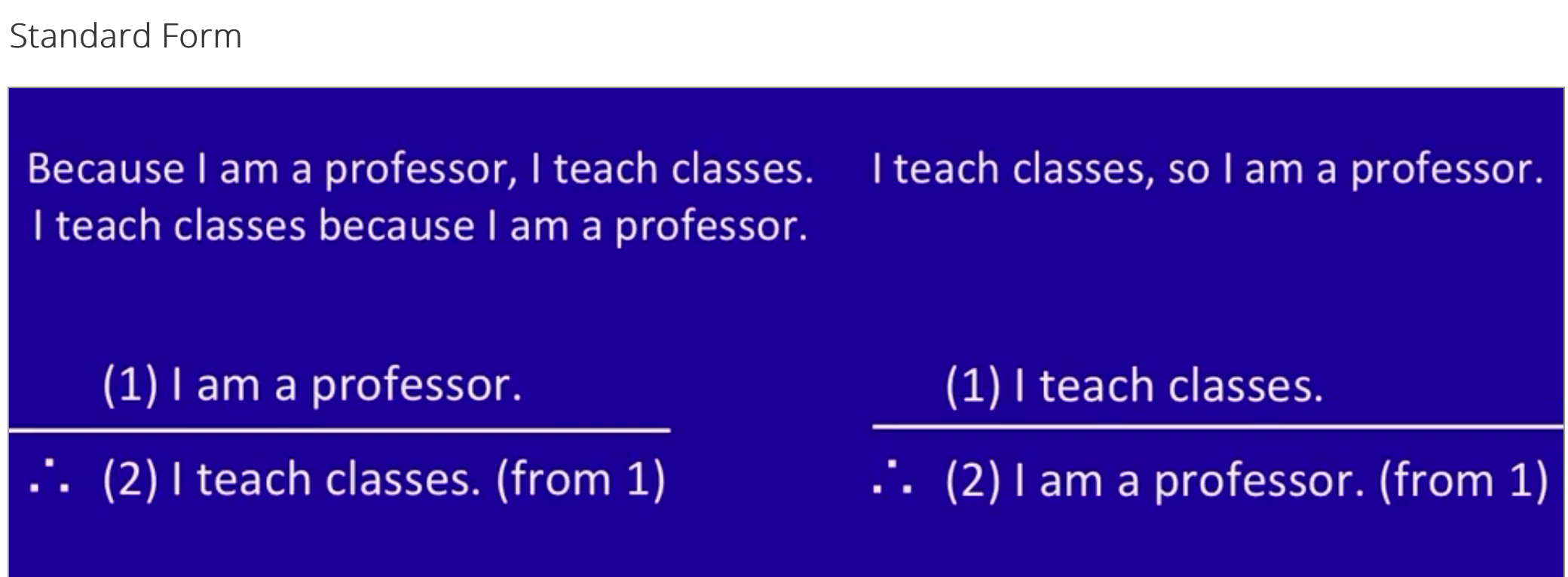Week 2: Think Again, How To Understand Arguments

Argument markers
- Conclusion markers - so, thus, therefore, thus, accordingly, consequently etc.
- sentence after them is the conclusion.
- Reason markers - since, because, for, as, for the reason that etc.
- sentence after them is a premise/reason.
- If clause does not constitute as an argument marker.
Standard form an argument, helps understand what type of argument one is making.
Premise 1
Premise 2
.
.
.
Premise n
.
. . Conclusion (from 1 to n)

The problem of skeptical regression -
Arguments are made of premises. Premises themselves need to be proven using arguments. This leads to regression.
Regress problem can be solved if it is a circular chain of arguments, or infinite regression, or if a premise is unjustified/wrong. Essentially all of these are bad arguments.
Another way to solve the problem is to start with shared assumptions.
Ways to solve regression problem.
- Assuring
- Authoritative - i assure you, some trustworthy source tells me
- Reflexive - authority is the self.
- Abusive - it is only common sense, only a fool will think etc
- Guarding - Weakening the premise by introducing uncertainty
- Extent - reducing applicability of the premise.
- Probability
- Mental - mental state of the person making the argument.
- Discounting - citing an objection. Phrases - but, although, whereas, nevertheless, even though, still etc.
- The trick of discounting straw people - use easier objections and discount them to keep focus on them rather than possibly more difficult objections.
- Evaluation - falls with in acceptable standard or widely help standard.
- Slanting - negatively evaluating without giving any reason.
Close analysis
Analysing an argument, marking various argument markers, language markers such as assuring, guarding, discounting, or evaluating terms.